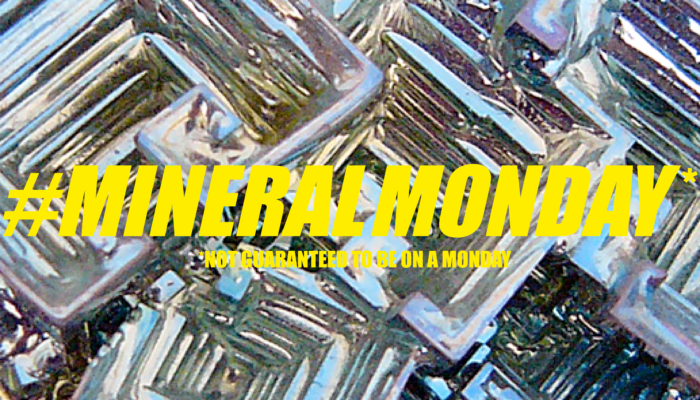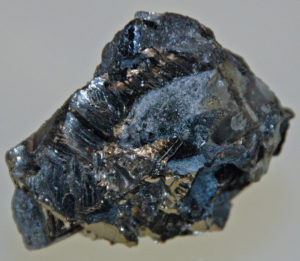
It’s not so common for us to think about pure metals as minerals, or even crystals, but just like pinocchio could be a real boy, pure metals can be minerals too. This is because, if the metal cools down from a melt very slowly, layers of metal atoms can add onto previously solidified atoms, forming a defined lattice of atoms, and ta-dahh, it’s a single crystal! This is different from most metal that is melted then cast into a mold, like what you find in a nail, because these are made from liquid metal that is cooled down super fast, so many tiny crystals (thousandths of a millimetre in size) all form at once. Fun fact – the blades on the turbines in jet engines are generally single crystals of metal, and if it’s not, it’s probably a 50 year old plane and you should get off it right now…
So lets talk about bismuth! It’s a pure metal? Specifically, it’s a post-transition metal. For people who didn’t spend their childhood memorising the periodic table, here it is:
That’s some high quality use of MS paint there. What does it look like? Well, it basically looks like a metal, but with the shape of a crystal. If you are hunting for a fun science experiment, you can actually grow your own bismuth crystals with just 1) some heat, 2) a saucepan and 3) some bismuth, at least two of which you probably have in your kitchen:
OK, I know what I’m doing next week. What does it look like in nature? And where can I get some? Natural bismuth crystals, in the best case, can look pretty similar to the ones you can make on a stove top, albeit way smaller, but more normally it will be a greyish mass.
Better make it yourself then. What can we use it for? Turns out, it’s quite commonly used. The chemical bismuth subsalicylate is sold in pink and yellow bottles (at least, here in the USA) as ‘pepto-bismol’, the clue is in the name. It’s what we take for, urm, let’s say, some “tummy problems”.
OK let’s talk about something else, I just had curry for lunch. Are there any other metals that form crystals naturally? Yes! Come back another week and I’ll tell you more!


